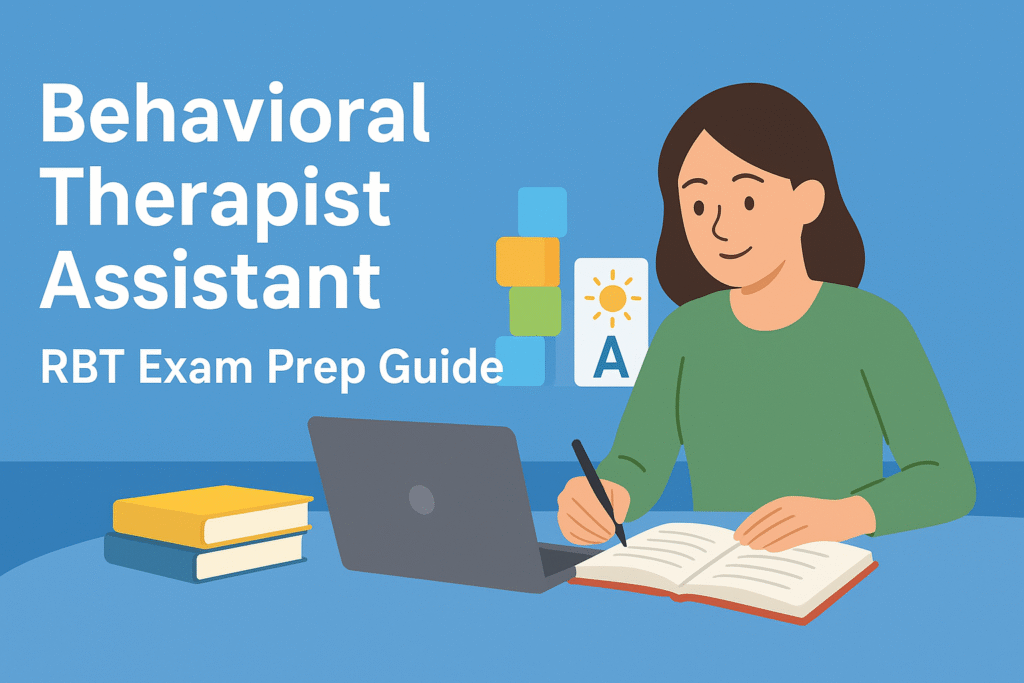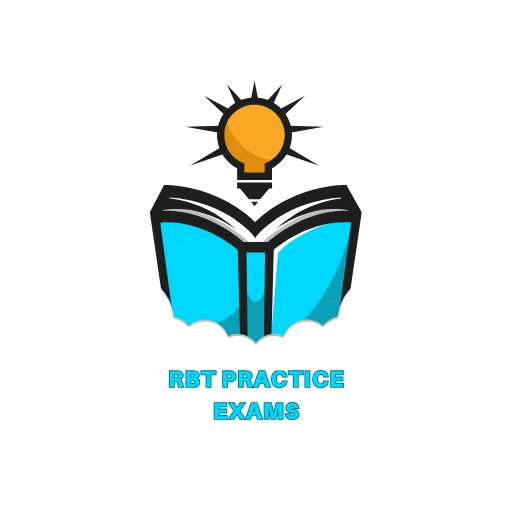A behavioral therapist assistant plays a vital role in helping individuals with developmental or behavioral challenges achieve meaningful progress in daily life. Often working under the supervision of a Board Certified Behavior Analyst (BCBA), these assistants apply the principles of Applied Behavior Analysis (ABA) to support children, teens, and adults. If you’re curious about what this role involves or considering a career path in ABA therapy, this guide breaks down everything you need to know from responsibilities to certification steps and how to prepare for the RBT practice exam.
Table of Contents

What is a Behavioral Therapist Assistant?
A behavioral therapist assistant, often called an ABA assistant or Registered Behavior Technician (RBT), is a professional who supports therapy sessions designed to improve communication, social, and adaptive skills. They usually work with children diagnosed with autism spectrum disorder (ASD), though their role extends to other developmental and behavioral needs.
Unlike licensed therapists, assistants do not design treatment plans. Instead, they implement strategies created by a BCBA and provide hands-on support during therapy sessions.
Key Duties and Responsibilities
A behavioral therapist assistant wears many hats. Some of the most common tasks include:
Implementing ABA treatment plans under the supervision of a BCBA.
Collecting data on client behavior to track progress.
Supporting skill development, such as communication, social interaction, and self-care.
Reinforcing positive behaviors using ABA methods.
Collaborating with families to ensure consistency between therapy sessions and home routines.
Creating structured, engaging activities that help clients practice new skills.
This mix of responsibilities makes the role both rewarding and highly interactive.
Education and Certification Requirements
To work as a behavioral therapist assistant, most employers require a high school diploma or equivalent. However, many prefer candidates who have taken psychology or education courses, or who hold a bachelor’s degree in a related field.
The most recognized certification for this role is the Registered Behavior Technician (RBT) credential, issued by the Behavior Analyst Certification Board (BACB) . To earn it, you must:
Complete 40 hours of RBT training.
Pass a competency assessment with a BCBA.
Clear a background check.
Successfully pass the RBT exam.
This exam ensures you can competently support ABA therapy practices. Preparing with an rbt mock test can help you feel more confident on test day.
Skills You Need to Succeed
Being a behavioral therapist assistant requires more than academic knowledge. The role calls for patience, empathy, and adaptability. Some essential skills include:
Strong communication: to connect with clients, families, and supervisors.
Observation skills: to notice small changes in behavior that indicate progress.
Problem-solving: to adjust approaches in real time during sessions.
Teamwork: since you’ll be part of a therapy team.
Resilience: progress can be slow, and persistence is key.
These soft skills make a big difference in the impact you’ll have.
Salary and Career Outlook
The demand for behavioral therapist assistants continues to grow. With more families seeking ABA therapy for autism and other needs, job opportunities are expanding across schools, clinics, and private practice settings.
In the US, salaries range between $35,000 and $50,000 per year, depending on location, employer, and experience. Some assistants earn more with overtime, school-based positions, or specialized training.
How to Become a Behavioral Therapist Assistant
If you’re ready to take the first step, here’s a clear roadmap:
Meet the basic requirements – High school diploma or higher.
Complete 40 hours of RBT training – Available online or through employers.
Gain supervised experience – Work under a BCBA during your competency assessment.
Schedule and pass the RBT exam – Practice with an rbt practice test to boost your chances of success.
Maintain your certification – Continuing education and supervision are required to stay current.
With this path, you’ll be ready to start working in a supportive and impactful role.
Frequently Asked Questions (FAQs) What is the difference between a behavioral therapist and a behavioral therapist assistant?
A behavioral therapist (such as a BCBA) designs and oversees treatment plans, while a behavioral therapist assistant (RBT) carries out those plans under supervision.
How long does it take to become a behavioral therapist assistant?
On average, it takes a few weeks to a few months, depending on how quickly you complete the 40-hour training and schedule your RBT exam.
Can I become an RBT without a degree?
Yes. A degree is not required. The main requirements are training, passing the competency assessment, and successfully completing the RBT exam.
Where do behavioral therapist assistants usually work?
They work in schools, clinics, early intervention centers, and sometimes in-home therapy settings.
Is this a good job for career growth?
Yes. Many behavioral therapist assistants go on to earn advanced degrees in psychology, education, or behavior analysis, opening doors to higher-paying positions like BCBA.
Conclusion
A behavioral therapist assistant plays a hands-on role in helping individuals develop meaningful skills and independence. With a growing demand for ABA services, this career offers stability, fulfillment, and a clear pathway for growth.
If you’re considering this role, preparing for the RBT exam is the best way to get started. Take the next step today with a free rbt practice exam to test your knowledge and build confidence for your certification journey.
